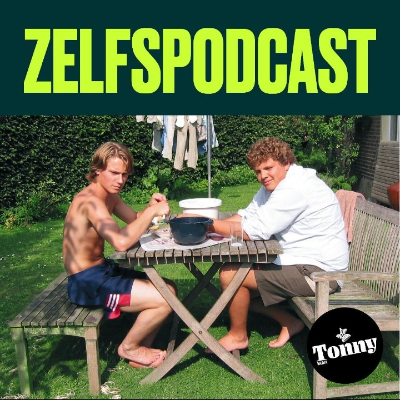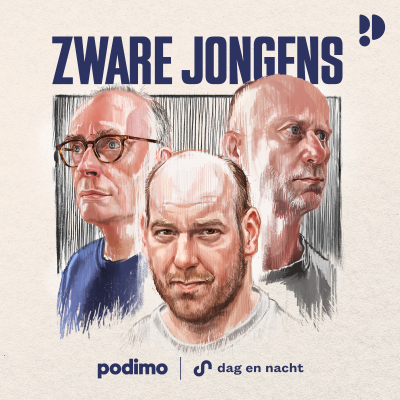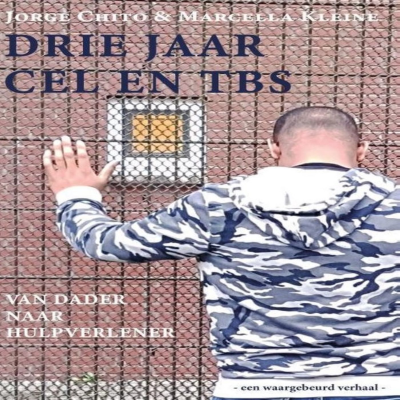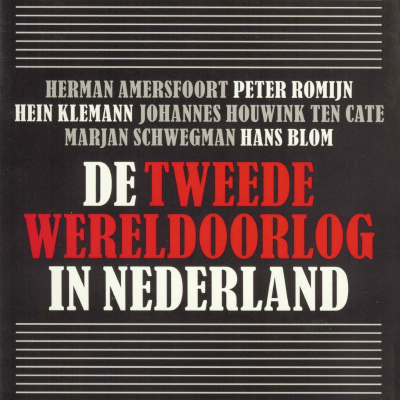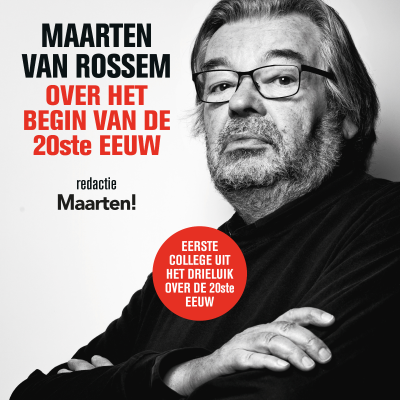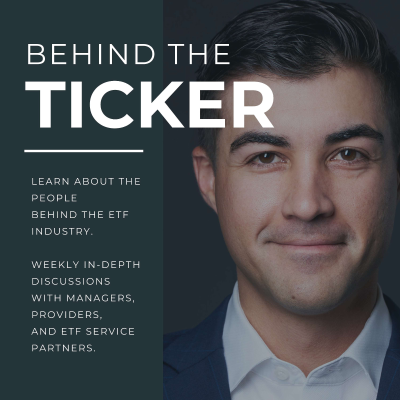
Behind the Ticker
Podcast door Brad Roth
Join Brad as he interviews entrepreneurs and experts in the wealth management industry, specifically around ETFs, on a weekly basis. Together, they go Behind the Ticker and delve into what drives these professionals on a daily basis. Discover how they achieved their success, learn about opportunities for disruption in the industry, and explore the challenges and obstacles they've faced along the way. Get ready for insightful conversations that uncover the stories behind the successes in wealth management.
Tijdelijke aanbieding
3 maanden voor € 1,00
Daarna € 9,99 / maandElk moment opzegbaar.
Alle afleveringen
91 afleveringenIn this episode, Brad sits down with Eric Lutton, CIO of Sound Income Strategies, to discuss the firm’s actively managed ETF: FXED, and its unique approach to fixed income investing. Eric shares his professional journey from trading in the pits of Chicago to managing institutional assets and ultimately building out Sound Income’s fixed income platform. The firm has grown from managing $30M with one advisor to nearly $4B with over 100 advisors, all through organic growth. At the core of their approach is a clear focus on income generation—particularly for retirees and conservative investors looking to preserve capital and generate steady cash flow. Eric explains that FXED was created to solve two problems: making the firm’s core-plus fixed income strategy available to smaller accounts and addressing the lack of fixed income ETFs that combine traditional bonds with higher-yielding alternatives like BDCs, REITs, preferreds, and non-core bond ETFs. He outlines how the portfolio targets around 70-75% fixed coupon instruments and layers in non-traditional income-generating securities—especially those with lower correlation to investment grade bonds—to deliver better risk-adjusted returns than broad benchmarks like the Agg. He discusses their bottom-up selection process, focus on management quality in BDCs and REITs, and commitment to avoiding names with poor underwriting or operational risks. FXED is actively managed to allow dynamic rebalancing between investment-grade and high-yield allocations depending on market conditions. Eric makes the case that active management in fixed income still has an edge—unlike equities, where alpha is increasingly hard to find. The fund aims to outperform by overweighting stronger names and avoiding the losers—something passive indexes can’t do. He emphasizes that FXED is especially useful for retirees or near-retirees who need reliable income and want to avoid relying too heavily on equities for yield. With a target yield in the upper 6% range, the fund allows for reduced capital commitment to fixed income, freeing up room for growth investments or risk-free cash buffers elsewhere in the portfolio.
In this episode of Behind the Ticker, Brad Roth interviews Ryan Thomes, Co-Portfolio Manager at Hotchkis & Wiley, to discuss the launch and strategy behind the firm’s newest ETF—HWSM, the Hotchkis & Wiley SMID Cap Diversified Value ETF. Ryan shares his career journey from investment consulting to portfolio management, explaining how his early due diligence work led him to join the very firm he once evaluated. Over the past 17 years at Hotchkis & Wiley, Ryan has been deeply involved in refining the firm’s value-based equity strategies and co-manages both the small-cap and SMID strategies. The conversation centers on the HWSM ETF, which launched in early 2024 and represents a natural extension of Hotchkis & Wiley’s long-standing small-cap value process. Although the ETF is new, the underlying investment methodology dates back over 20 years. Ryan breaks down the firm’s three-step process: proprietary quantitative modeling, human analyst review, and thoughtful portfolio construction. Unlike traditional quant screens, Hotchkis & Wiley’s models attempt to emulate how a human analyst would value companies based on normalized mid-cycle earnings rather than current market conditions. This combination of rigorous modeling and fundamental judgment allows them to focus on out-of-favor, under-followed stocks with long-term value potential. HWSM typically holds between 150–200 names, balancing diversification with high active share, and utilizes a tiered weighting system that ties directly to fundamental risk ratings. Analysts assess companies across three pillars—business quality, balance sheet strength, and corporate governance—and these scores directly impact the weightings in the portfolio. The fund is rebalanced biannually with monthly adjustments as needed, helping maintain both conviction and efficiency. Ryan explains that SMID caps—especially value names—are historically underappreciated and undervalued compared to large-cap growth, making them especially compelling today. Despite large-cap tech’s dominance over the past decade, he sees potential mean reversion in valuations that could favor smaller, overlooked companies. HWSM is positioned as either a core equity holding or a complement to growth-oriented SMID allocations, offering access to Hotchkis & Wiley’s institutional-quality research through a tax-efficient ETF vehicle.
In this episode of Behind the Ticker, host Brad Roth speaks with Kirk McDonald, Portfolio Manager at Argent Capital Management, about his unique path from Air Force pilot to managing the Argent MidCap ETF (ticker: AMID). McDonald shares how his firm’s mission to deliver both strong investment performance and top-tier client service inspired their move into the ETF space. With a deep-rooted philosophy focused on “enduring businesses,” Argent seeks companies with consistent cash flow growth, durable competitive advantages, and strong capital allocation by management. Kirk dives into the construction of AMID, which holds a concentrated portfolio of 40–50 midcap names with low turnover—around 20% annually. What differentiates Argent’s approach is the integration of both quantitative modeling and fundamental research, a methodology McDonald calls “quantamental.” This framework is built on 25 fundamental factors that guide stock selection, continually refined to ensure alignment with their long-term investing philosophy. Kirk shares a memorable analogy comparing portfolio candidates to pigs at a trough—emphasizing the constant drive to prioritize younger, hungrier contenders that can generate future outperformance. McDonald also breaks down key portfolio holdings, including Copart and Fortinet, and explains how AMID performs across different market cycles. While the strategy may lag during market regime shifts, it tends to outperform once trends stabilize. He stresses the importance of risk management, drawing from his aviation background to describe a systematic process embedded throughout the stock selection lifecycle. Finally, McDonald explains how AMID fits into broader client portfolios, describing midcap stocks as a “forgotten” asset class underrepresented in most investor allocations despite historically delivering strong returns. He also previews Argent’s growing ETF lineup, which now includes large cap and small cap offerings and will eventually expand to cover SMID and high-yield strategies.
In this episode of Behind the Ticker, Brad Roth sits down with Rob Thummel, Senior Portfolio Manager at Tortoise Capital Advisors, to dive into the firm’s active ETF, the Tortoise Essential Energy Fund (Ticker: TPZ). Rob shares his decades-long journey in the energy sector—from working in gas stations and oilfields as a teenager to helping lead one of the most focused energy investment firms in the country. Tortoise Capital is devoted entirely to energy, aiming to deliver superior risk-adjusted returns by investing across the full spectrum of the sector, including infrastructure, utilities, and renewables—not just traditional oil and gas producers. TPZ, which recently transitioned from a closed-end fund to an active ETF, offers investors a dynamic approach to the evolving energy landscape. Rob explains how the fund is positioned to capture opportunities stemming from electrification and increased U.S. energy exports, with particular focus on natural gas and liquid infrastructure. He emphasizes that energy is no longer just about oil—natural gas and electricity are central to powering data centers and AI advancements, and TPZ is designed to align with that megatrend. The portfolio maintains an active share of 86%, reflecting its substantial divergence from traditional benchmarks like the S&P Energy Index or ETFs like XLE. TPZ typically holds 80-90% in equities and 10-20% in fixed income, with additional option overlays to generate income and reduce volatility. Rob describes the fund’s hybrid approach—combining top-down macro analysis with bottom-up fundamental research—to find undervalued names with strong cash flows and management quality. With a current dividend yield of about 5% and one-year performance exceeding 40%, TPZ has outpaced many passive energy benchmarks by leaning into secular shifts and tactically avoiding cyclical pitfalls. Rob positions TPZ as a core energy allocation for diversified portfolios, not just for total return potential, but for its robust income stream and long-term exposure to the energy-AI convergence.
In a recent episode of Behind the Ticker, Bob Elliott, co-founder and Chief Investment Officer of Unlimited, discussed the firm’s mission to democratize hedge fund strategies through innovative ETF structures. Drawing on his experience managing strategies at Bridgewater Associates and running a $125 million venture capital fund, Elliott launched Unlimited to address what he sees as fundamental inefficiencies in traditional hedge funds—high fees, limited access, and tax-inefficient vehicles. Unlimited’s approach uses proprietary technology to replicate hedge fund strategies at lower costs, inside liquid, tax-efficient ETFs. The firm’s latest offering, the Unlimited HFGM ETF (ticker: HFGM), seeks to replicate the returns of global macro hedge funds, offering a 2x exposure to the strategy at just 95 basis points. Elliott explained that global macro is one of the most attractive and diversifying hedge fund styles due to its flexibility across asset classes—currencies, commodities, rates, equities—and its historically low correlation to traditional 60/40 portfolios. By leveraging a machine learning-driven process, HFGM infers the positioning of roughly 500 macro hedge fund managers in near real-time, using public market data and return streams to replicate their exposures. Elliott emphasized that HFGM is fully systematic, with daily updates to inferred manager positioning and weekly average rebalancing. The ETF primarily uses futures contracts for efficiency, allowing both long and short exposure across global macro markets while benefiting from tax-friendly ETF structuring. Elliott stressed that the firm avoids “black box” opacity by grounding its machine learning in intuitive, transparent modeling—essentially scaling the same logic any investor might use to reverse-engineer a manager’s trades, but with far greater accuracy and breadth. He positioned HFGM and Unlimited’s broader ETF suite as part of a shift in portfolio construction—from the old 60/40 model to a more modern 50/30/20 framework, where 20% is allocated to alternatives, including both liquid and illiquid strategies. HFGM, with its manager-diversified exposure, ease of execution, and lack of paperwork or K-1s, offers a compelling way for advisors and institutions to gain hedge fund-like exposure without the drawbacks of traditional LP structures.
Tijdelijke aanbieding
3 maanden voor € 1,00
Daarna € 9,99 / maandElk moment opzegbaar.
Exclusieve podcasts
Advertentievrij
Gratis podcasts
Luisterboeken
20 uur / maand



